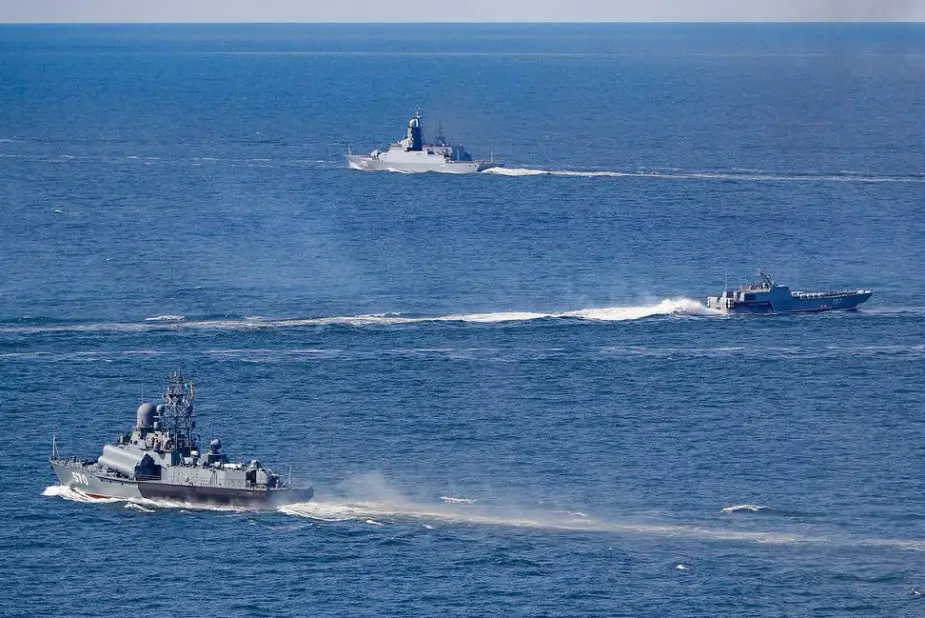Russia is building new-generation warships and submarines and upgrading old ships. Design of next-generation warships and submarines is beginning. The Defense Ministry and industry have sustainable perceptions of the development of major classes of warships and auxiliary vessels, the Independent Military Review writes.
Follow Navy Recognition on Google News at this link
 Analysis: Russian Navy to focus on precision weapons - take 1 (Picture source: Ministry of Defense of the Russian Federation)
Analysis: Russian Navy to focus on precision weapons - take 1 (Picture source: Ministry of Defense of the Russian Federation)
The demand for warships is determined by the shipbuilding program, the arms program and defense procurement order. They include ships for the Navy, the Border Service, the Interior and Emergency Ministries.
Russia is among the countries which can build all classes and types of warships (the USA, the UK, France, China and likely India). Russia is also utilizing various vessels, including nuclear-powered ones.
Growing outside threats make the Russian Navy focus on naval precision weapons as non-nuclear deterrence capable of destroying targets in the depth of adversary territory. All warships under construction are armed with such weapons.
Current batch production of warships and submarines is likely to be completed in 2025-2028. New-generation warships will follow. They will be an evolutionary development of current warships and submarines to ensure technological succession at shipyards and decrease life cycle costs. There is a major scientific potential for quality improvement of tactical and technical characteristics of future warships.
The Navy has a new mission to operate in the Arctic. It is necessary to have ice-class and environment-friendly warships for that. The design has to be reviewed according to global experience. Shipyards have to ensure long operation and life-cycle deployment in the Arctic, as well as overhaul and upgrade without considerable costs.
Succession and development of design schools are important. The design has to cover a broad range of prospective warships, including technically sophisticated units, such as aircraft carriers, universal amphibious assault ships, destroyers, submarines.
The trends in Russian nuclear submarine construction coincide with the foreign ones, however, Russian U-boats tend to increase effectiveness by missile strikes at coastal and sea targets. They are built by subseries. The Severodvinsk Yasen-class SSGN of project 885 was followed by a series of Yasen-M-class subs of project 885M lead by the Kazan SSGN. The series of three Borey-class SSBN of project 955 lead by the Yuri Dolgoruky was followed by Borey-A-class subs of project 955A lead by the Knyaz Vladimir.
Russian diesel-electric and non-nuclear submarines have to defend SSBN and strike at coastal and sea targets. The operation of Black Sea fleet diesel-electric submarines in the Mediterranean where they engaged Kalibr cruise missiles showed their high effectiveness. However, the creation of Russian non-nuclear submarines with air-independent power plants lags behind.
Combat engagement by the Russian Navy of naval aviation confirmed the necessity to have aircraft carriers. Naturally, it is a costly business and the design has to begin during the current arms program as the warship is sophisticated. Russian aircraft carriers are designed in two options: big displacement and displacement of close to 50 thousand tons. The capacity of shipyards is likely to create an aircraft carrier of 50 thousand tons by 2030. The Krylov Scientific Center presented the concept of the aircraft carrier at Army-2018 forum.
© Copyright 2020 TASS Navy Recognition. All rights reserved. This material may not be published, broadcast, rewritten or redistributed.



